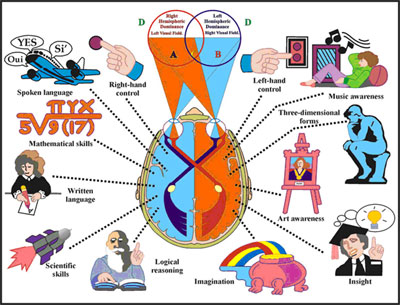This week, I wish to focus more on the interpersonal field of business. How to manage, how to motivate, how to be...
I've just finished an excellent article on sciam, regarding the equally titled subject of psychology and leadership. This is an area, I think about a lot and I cannot say that I have mastered it as yet. But that won't prevent me from trying.
From the article, I learned that our understanding of leadership has evolved over time. We started with viewing it as the action of single men, which stemmed from the way our reality worked at that time (think: the kings and queens in their ivory towers); we then slowly moved towards leaders that were ingrained in the social structure that they were leading (think: how people's revolutions lead to changes in the way governments ruled).
What is important is to form an identity which is shared among the organisation, and this very much depends on the way the "society" is organised; the reality it is operating in. Democratic organisations depend on a co-operative type of leadership; autocratic organisations do not share that methodology.
There are several methods to instil a social identity:
- Using ways to become one of the group, through speech, dress, salaries: The article mentions Bush's vocal "intricacies" as a method for becoming more sympathetic with the group. It's true that Bush got a lot of bad press because of his interesting way to express himself, but it's also true that it's usually the vocal minority that is heard the loudest.
- Favouring fairness in solving disputes: This should be clear. The people do not like it if leaders play favourites. They also don't like it if they discriminate against outsiders (see the Jena 6 debacle for an excellent case-study).
- Molding social identities through words; defining a social identity that - matches the policies they are trying to implement: The article mentions president Lincoln, who emphasized values of liberty, while implementing policy to abolish slavery. Similar tactics can be witnessed today.
- Not only making identities real, but making followers experience them as real: Talk is just talk. You have to Match vision with a strategy to make that vision a reality.
I tend to agree that the involvement of people is a condition for today's leadership. Tyrannies are no longer accepted. However, I also don't think that everyone is equal in their understanding of decision-making. This is a sad truth, but with the acceptance of leadership comes a certain understanding that this is accompanied by a level of expertise (more on this in another post).
To bring these two together, the leader and the followers, there must be a shared understanding, which comes from proper communication. The reason the European constitution failed was the same reason why no-one reads End User Licence Agreements (EULAs). Because product-makers and politicians phrase their words in ways that often only lawyers can understand.
I can guarantee you that the majority of the Dutch population did not read the document of the constitution. But I'm a pretty sure that a large proportion of the US populace read theirs. The simple explanation is proper presentation. Even I, a European, can remember certain amendments of the US-constitution, because I've seen it in a bullet-point format. The implication should be clear.
So the 1-sentence conclusion is: If you want to lead, make your direction understood.
The picture is courtesy of Extensor.co.uk
P.S. I just had to add this Scott Adams cartoon. Very fitting!

Filed under: culture, human resources, management, retail, self-development, vision
I've just finished an excellent article on sciam, regarding the equally titled subject of psychology and leadership. This is an area, I think about a lot and I cannot say that I have mastered it as yet. But that won't prevent me from trying.

From the article, I learned that our understanding of leadership has evolved over time. We started with viewing it as the action of single men, which stemmed from the way our reality worked at that time (think: the kings and queens in their ivory towers); we then slowly moved towards leaders that were ingrained in the social structure that they were leading (think: how people's revolutions lead to changes in the way governments ruled).
What is important is to form an identity which is shared among the organisation, and this very much depends on the way the "society" is organised; the reality it is operating in. Democratic organisations depend on a co-operative type of leadership; autocratic organisations do not share that methodology.
There are several methods to instil a social identity:
- Using ways to become one of the group, through speech, dress, salaries: The article mentions Bush's vocal "intricacies" as a method for becoming more sympathetic with the group. It's true that Bush got a lot of bad press because of his interesting way to express himself, but it's also true that it's usually the vocal minority that is heard the loudest.
- Favouring fairness in solving disputes: This should be clear. The people do not like it if leaders play favourites. They also don't like it if they discriminate against outsiders (see the Jena 6 debacle for an excellent case-study).
- Molding social identities through words; defining a social identity that - matches the policies they are trying to implement: The article mentions president Lincoln, who emphasized values of liberty, while implementing policy to abolish slavery. Similar tactics can be witnessed today.
- Not only making identities real, but making followers experience them as real: Talk is just talk. You have to Match vision with a strategy to make that vision a reality.
I tend to agree that the involvement of people is a condition for today's leadership. Tyrannies are no longer accepted. However, I also don't think that everyone is equal in their understanding of decision-making. This is a sad truth, but with the acceptance of leadership comes a certain understanding that this is accompanied by a level of expertise (more on this in another post).
To bring these two together, the leader and the followers, there must be a shared understanding, which comes from proper communication. The reason the European constitution failed was the same reason why no-one reads End User Licence Agreements (EULAs). Because product-makers and politicians phrase their words in ways that often only lawyers can understand.
I can guarantee you that the majority of the Dutch population did not read the document of the constitution. But I'm a pretty sure that a large proportion of the US populace read theirs. The simple explanation is proper presentation. Even I, a European, can remember certain amendments of the US-constitution, because I've seen it in a bullet-point format. The implication should be clear.
So the 1-sentence conclusion is: If you want to lead, make your direction understood.
The picture is courtesy of Extensor.co.uk
P.S. I just had to add this Scott Adams cartoon. Very fitting!

 The
The 

